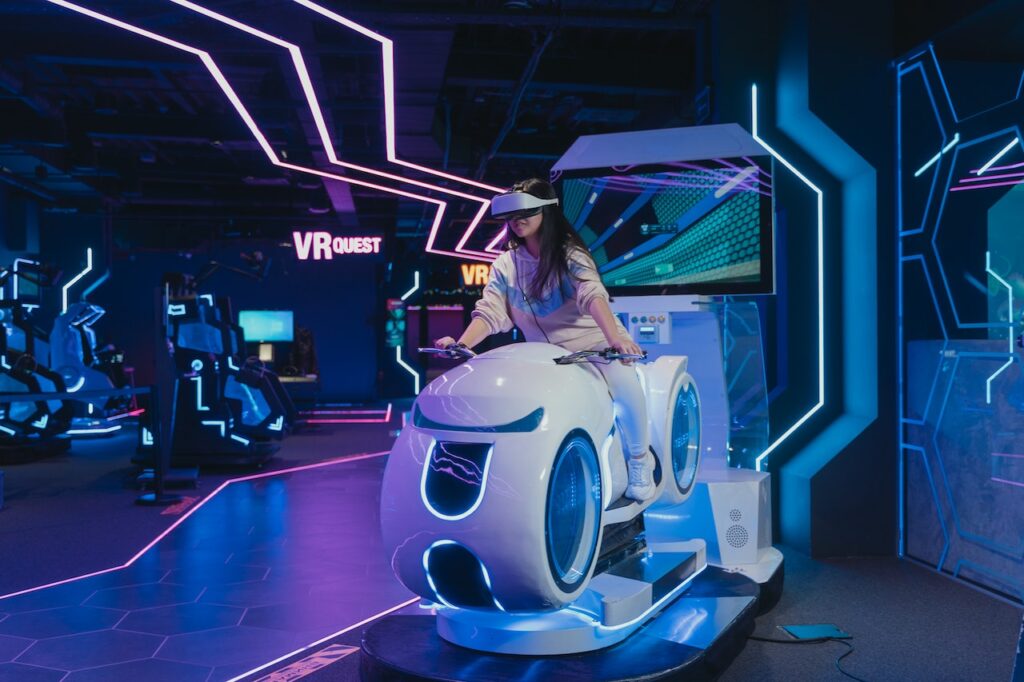Virtual Reality (VR) has been a growing technology for the past few years and has become a major player in the entertainment and gaming industry. With the increase in popularity, it’s essential to know the number of VR users worldwide.
In this article, we will look at the current statistics of VR users and delve into more detail about the VR industry and its growth.
How Many VR Users Are There?
As of 2021, the estimated number of VR users worldwide is around 171 million. The VR market has grown significantly in recent years, with a projected increase of over 30% in the next five years.
This growth is due to advancements in VR technology, the introduction of more affordable VR systems, and an increase in VR content.
What is Virtual Reality (VR)?
Virtual Reality (VR) is a computer-generated simulation of a three-dimensional environment that can be interacted with in a seemingly real way. VR allows users to immerse themselves in a digital world, interact with objects and characters, and experience different environments and scenarios.
History of Virtual Reality
The concept of VR has been around for decades, with early VR systems dating back to the 1960s. However, it wasn’t until the 2010s that VR technology advanced enough to become a viable consumer product.
In 2012, Oculus, a VR company acquired by Facebook, introduced the Oculus Rift, a VR headset that generated widespread interest in VR technology. Since then, multiple VR systems have been released, including the HTC Vive, PlayStation VR, and Oculus Quest.
Types of Virtual Reality
There are two main types of VR: tethered VR and standalone VR. Tethered VR systems require a connection to a computer or gaming console to operate, while standalone VR systems are self-contained and do not require a connection to another device.
How Virtual Reality Works?
VR systems typically consist of a headset, which contains a screen for each eye, and handheld controllers that allow users to interact with the VR environment. The headset tracks the user’s head movements, and the screen displays a 3D environment that changes in real time based on the user’s perspective.
The handheld controllers track the user’s hand movements, allowing them to interact with objects and characters in the VR environment.
Applications of Virtual Reality
VR has a wide range of applications, including gaming, education, healthcare, military training, and even journalism.
- In the gaming industry, VR provides a more immersive gaming experience, allowing players to feel as though they are inside the game.
- In education, VR can be used to simulate real-world environments and scenarios, allowing students to experience and learn in a more interactive way.
- In healthcare, VR can be used for medical simulations and training, as well as for therapy and pain management.
The Future of Virtual Reality
The VR industry is projected to continue growing in the future, with advancements in VR technology and the introduction of new VR systems and applications. VR has the potential to revolutionize multiple industries, from gaming and entertainment to education and healthcare.
As VR technology continues to advance, it’s exciting to think about the new possibilities and experiences that VR will bring in the future.

Introduction to VR Headsets
Virtual Reality (VR) Headsets are the primary devices used to experience VR environments. They consist of a headset that covers the user’s eyes and a set of handheld controllers that allow users to interact with the VR environment.
Types of VR Headsets
There are two main types of VR Headsets: tethered and standalone.
Tethered VR Headsets
Tethered VR Headsets are connected to a computer or gaming console and require a wired connection to operate. Examples of tethered VR Headsets include the Oculus Rift, HTC Vive, and PlayStation VR.
Standalone VR Headsets
Standalone VR Headsets are self-contained and do not require a connection to another device. Examples of standalone VR Headsets include the Oculus Quest and the Oculus Quest 2.
Key Features of VR Headsets
When choosing a VR headset, there are several key features to consider, including:
- Display Resolution: The higher the resolution, the clearer and more detailed the VR environment will appear.
- Field of View: The field of view is the extent of the observable world that is seen at any given moment. A larger field of view provides a more immersive VR experience.
- Refresh Rate: The refresh rate is the number of times the image on the screen is refreshed per second. A higher refresh rate results in a smoother and more realistic VR experience.
- Latency: Latency is the time it takes for the VR headset to respond to a user’s movements. A lower latency results in a more responsive and natural VR experience.
- Handheld Controllers: The handheld controllers allow users to interact with the VR environment. It’s important to choose VR Headsets with controllers that are comfortable to use and provide accurate tracking.
Popular VR Headsets on the Market
There are several popular VR Headsets on the market, each with its own unique features and capabilities. Some of the most popular VR Headsets include:
- Oculus Rift
- HTC Vive
- PlayStation VR
- Oculus Quest
- Oculus Quest 2
- Valve Index
VR Activities
Virtual Reality (VR) has come a long way since its inception and today it is a multi-billion dollar industry that offers a wide range of experiences to users. From gaming to education and entertainment, VR has something for everyone.
Gaming in VR
One of the most popular uses for VR is gaming. VR gaming offers a highly immersive and interactive experience that traditional gaming simply cannot match. Some popular VR games include:
- Beat Saber
- Superhot VR
- Arizona Sunshine
- Vader Immortal
- Moss
Educational VR Experiences
VR is not just for entertainment, it is also a powerful educational tool. With VR, students can experience simulations of historical events, scientific concepts, and even medical procedures in a way that traditional learning simply cannot match. Some popular VR educational experiences include:
- The Body VR: Journey Inside a Cell
- Apollo 11 VR
- Tilt Brush
- Google Earth VR
- NASA’s Mars 2030 Experience
Entertainment in VR
VR has also revolutionized the entertainment industry. With VR, users can experience concerts, movies, and other forms of entertainment in a whole new way. Some popular VR entertainment experiences include:
- Melody VR
- IMAX VR
- The VOID
- Dreamscape Immersive
- Bigscreen
Social VR
Social VR allows users to connect and interact with other people in a virtual environment. This is especially important during the pandemic when people are looking for new and innovative ways to connect with others. Some popular social VR experiences include:
- VR Chat
- Altspace VR
- Rec Room
- VR Kanojo
- VR Museum
Conclusion
Virtual Reality (VR) is a computer-generated simulation of a three-dimensional environment that allows users to immerse themselves in a digital world. VR has a wide range of applications, including gaming, education, and healthcare, and is projected to continue growing in the future.
With advancements in VR technology and the introduction of new VR systems and applications, the future of VR is exciting and full of possibilities.


